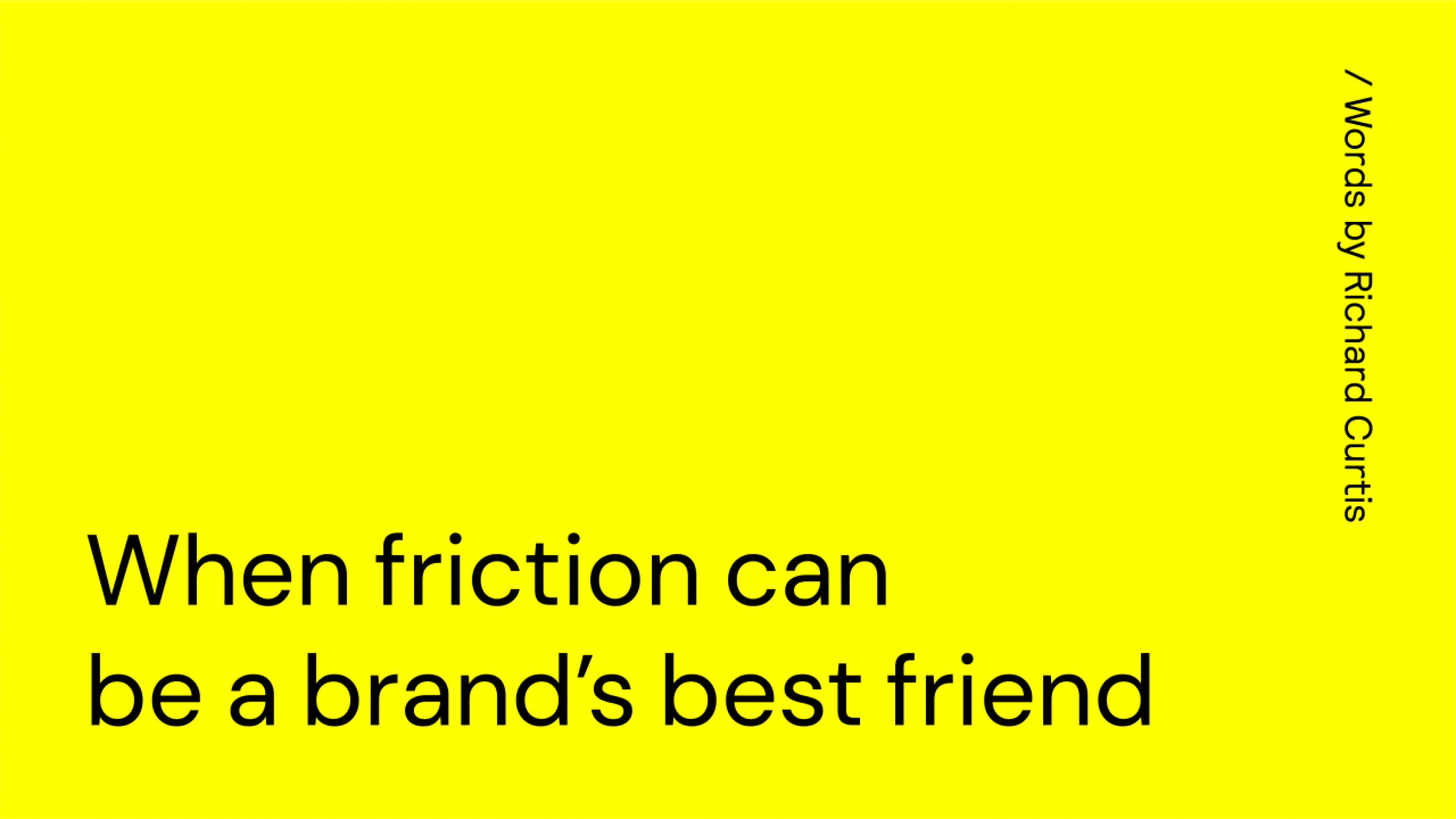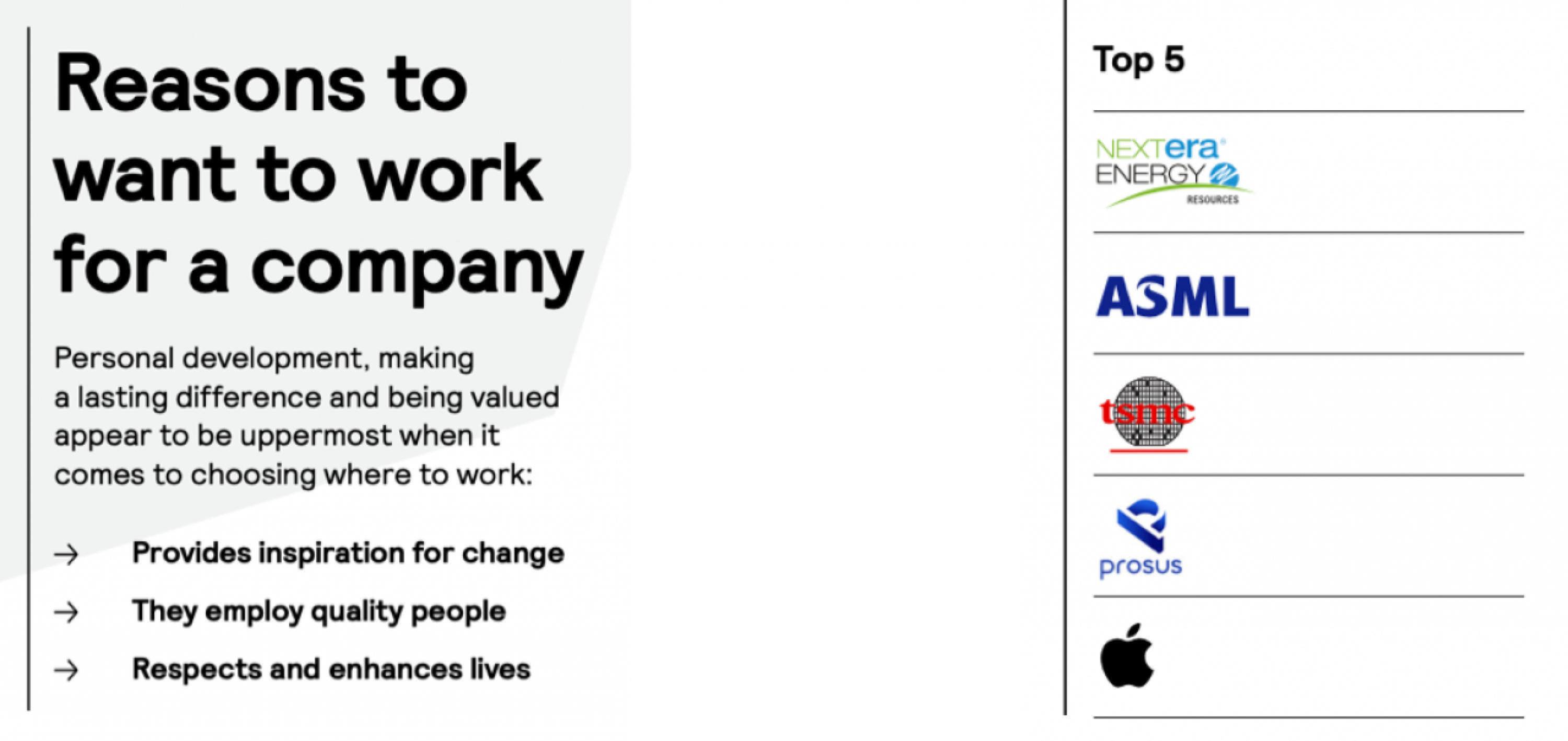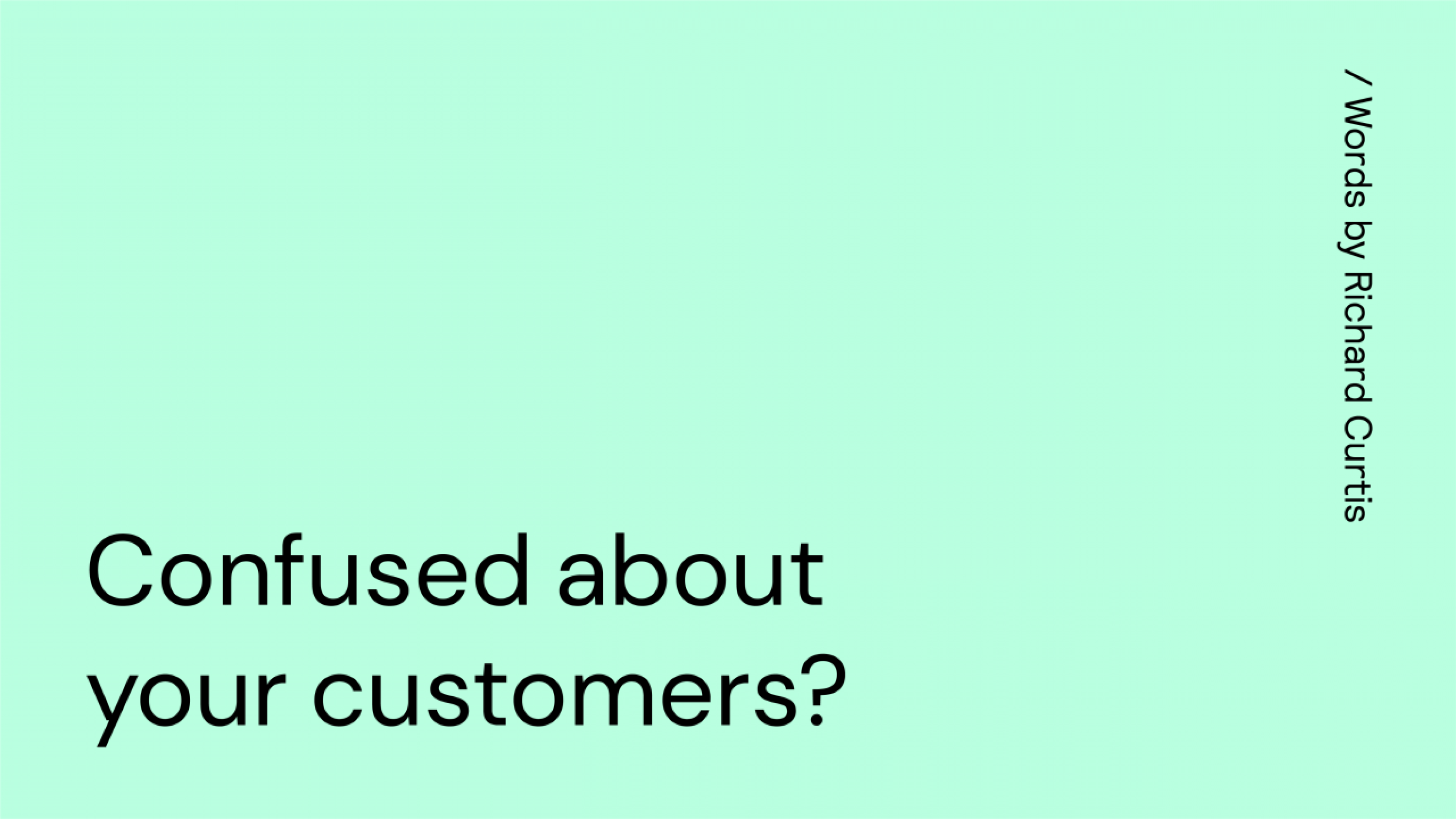

When friction can be a brand’s best friend
I always enjoy those oft-forgotten, in-between moments in any experience.
The elevator music that selects songs in response to the number of passengers – Only The Lonely, thanks QT for the tongue-in-cheek reminders.
The concierge who offers to take a picture of the family before we leave for the airport, only to snap another sneaky selfie with his happy crew of smiling bellboys – thanks Legoland.
The bank manager who suggests you pop over the road and enjoy a coffee on their tab at the local café while you wait for them to dot the i’s and cross the t’s on your home loan paperwork – thanks ANZ.
These moments are not necessarily part of any defined experience per se. They likely wouldn’t show up in an organisation’s plans or ideas to help make the customer journey or user flow as simple, easy and seamless as possible. Because they don’t. They’re neither seamless nor invisible. Quite the opposite, they introduce ‘friction’ into the experience in ways that are highly conspicuous, perhaps even disruptive, but no less positive and memorable.
Beautiful seams
It was the late Mark Weiser, chief technology officer at Xerox’s PARC and pioneer of ubiquitous computing, who first labelled these kinds of interactions and experiences as ‘beautiful seams’.
Because it is likely impossible or at times simply unrealistic to create a perfectly seamless experience. Invariably, there will be hand-off points. So the objective of any curated customer experience has to be to ensure that those points – or those seams that join two tasks or states – are indeed ‘beautiful’.
What’s more, this seems to me the perfect antidote to a world at risk of sinking into a seamless sea of sameness. Look up for a moment from your screen and you’ll find that complex distinction is often the nature of things: From exotic plumages to panoramic sunsets. In a world with the friction all but extracted, do you also risk losing some of what helps you stand out?
Any brand needs to be created with purpose but it is ultimately defined by its experience. Standing next to your customer and understanding all the ways in which you might strengthen the link between those two dimensions of purpose and experience is paramount to giving your business a competitive advantage. So how do you ensure your brand shows up and stands out in the experience offered by your business, product or service?
Every experience has a heartbeat
Firstly, ask yourself this question: What is the ‘heartbeat’ of the experience?
It’s this heartbeat that ought to pulse through the experience: An emotional connection that your customers feel as they use your brand. Not only can it help you identify where and how to remove points of friction but also pinpoint those moments that matter and where your brand can elevate the experience, meaningfully and memorably.
For Air Tahiti Nui, the tiare flower is an enduring and powerful symbol of the brand, used by employees to tell the story of the airline and the Islands of Tahiti through the customer experience. When you board your flight, customers receive a closed tiare flower as a gift and, over the course of the journey, the flower slowly opens to reveal its inner beauty, ready to be worn on disembarking at your holiday destination. It’s an immersive experience and one in which the tiare flower lives and breathes beyond the logo on the tailfin and tells the emotional story of the heart of the brand, each and every time you travel.
For one university marketer, reviewing new student journey maps to make the brand experience simpler and easier to navigate, something felt awry. Sure they made sense, but she couldn’t help but feel there was something missing. Wasn’t the idea of a university education founded in curiosity and discovery? By making it all too easy, the university risked overlooking the opportunity to demonstrate their brand’s distinctive story by having it pulse at key moments through the lived experience.
Minimum viable experience
Secondly, exploring and enabling the customer experience doesn’t mean you have to boil the ocean, as they say. You can start a ripple with even the smallest change if your focus is true. It could be a handwritten note or some other personal gesture that costs not much more than the time it takes to say or do, something you might describe as the ‘minimum viable experience’.
For example, the hotel that lets you check-in from the comfort of your room. In removing the pain point of unhelpful queues, it does so with a touch of flair that transforms the arrival experience into the most beautiful of seams.
Alternatively, the ‘peak end rule’ suggests it’s the last step in any experience that can have an out-sized impact on how people remember it – hence the significance of the Legoland concierge’s actions and the lasting impression left on our family.
Experience-led innovation
Thirdly, a brand is what a brand does: It’s created with purpose but ultimately defined by the experience. When you strengthen the link between the two, you gain an insight into what your brand can ‘do’ in ways that no other brand can. And you reveal an insight into where your brand can go where your competitors can’t follow.
Step into the white space and find the experiences you can create distinct to your brand and can’t be meaningfully copied by any other. Some might be quick-wins like trigger-based interactions for a superannuation fund committed to being their customer’s ‘guide’ through life – interactions automated to respond to specific customer behaviours that had been identified by mapping the customer experience.
Other experience-led innovations might be more involved, like ANZ’s Financial Wellbeing initiative to give their customers the full range of tools, tips and support to take control and better manage their money. The bank’s purpose is clear – ‘to shape a world where people and communities thrive’. But it’s only by understanding and transforming the experience this strategy becomes real for ANZ customers.
How you measure the customer experience is fast becoming the ultimate benchmark of success and the analysis of customer interactions and behaviours can offer your teams unequivocal insight into what to do next. Whether it’s Net Promoter or Customer Effort Scores, your business’s ability to respond and adapt is a pivotal and productive lever for many businesses and their brands.
But don’t just look in the data for what you want your customers to think and do, find out how they feel. Because in those moments when your brand can meaningfully elevate the experience, friction can sometimes be your brand’s best friend.
This article was first published by CMO.


